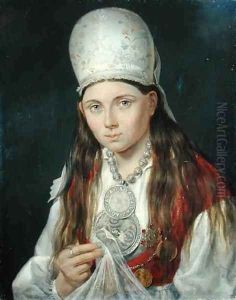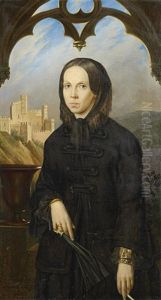Gustav Adolf Hippius Paintings
Gustav Adolf Hippius was a notable Baltic German painter, primarily known for his portrait works and his contributions to the arts in Estonia. Born on March 14, 1792, in Tallinn, which was then part of the Russian Empire and is now the capital of Estonia, Hippius grew up in an era characterized by the movement of Romanticism that was spreading across Europe.
Hippius received his initial art education in Tallinn before moving to Saint Petersburg to study at the Imperial Academy of Arts. There, he honed his skills and was influenced by the Neoclassical style prevalent at the time. He graduated with a gold medal, which was an indication of his exceptional talent and promise in the field of visual arts. After his studies, he traveled through Europe, a common practice among artists of his time, which allowed him to engage with various artistic styles and broaden his perspective on art.
Throughout his career, Hippius was known for his remarkable portraits, which were in high demand among the nobility and affluent bourgeoisie. His portraits were appreciated for their elegance, attention to detail, and ability to capture the character and social status of his subjects. Hippius was not only a talented painter but also an influential teacher and art administrator. He served as a professor at the Imperial Academy of Arts, impacting the next generation of artists and contributing to the cultural life of Saint Petersburg.
Later in his life, Hippius returned to Estonia, where he continued to work and contribute to the local art scene until his death. He passed away on November 10, 1856, in Haapsalu, Estonia. Despite being a central figure in Baltic art history, Hippius' legacy is somewhat overshadowed by the more prominent artists of Western Europe. Nonetheless, his work is significant for its role in the development of portrait painting in the Baltic region and for its representation of the cultural and historical milieu of his time.

